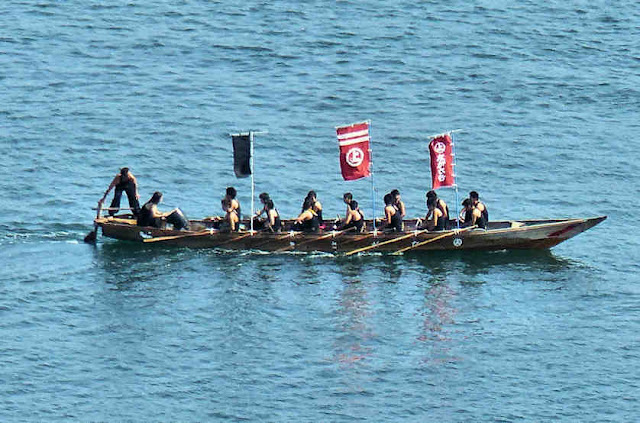Shunki Taisai translates to "Great Spring Festival," although, as far as I can tell, it is not a very common event.
In May 2011 we went down to Taikodani Inari Shrine in Tsuwano for their Shunki Taisai. As far as I know, they have not held one since.
It was quite a grand affair, with numerous priests, mikos, and representatives of the town dressed in samurai outfits.
I was very surprised to see some of the miko wearing swords.... don't think I have seen that before...
a Himorogi was set up in the shrines open courtyard. A himorogi is an area demarcated with 4 bamboos with shimenawa. It is believed this was the form shrines took in ancient times before they utilized buildings a la Buddhism.
First, the miko purified each other and then the townsmen.
Then it was the turn of the priests....
One of the great things about Tsuwano is that there are never crowds, so events such as this,
or the Heron Dance or even
Yabusame, you can get close to the action, not view things from a distance at the back of a crowd like at the major tourist destinations...
All the participants lined up and awaited the Guji, head priest.
The Guji arrives under the shade of a ceremonial parasol....
Then all the participants follow in procession and line up inside the himorogi...
Offerings are made and norito are read....
The guji then leads the procession up into the main hall of the shrine where further rituals are held.
later in the afternoon we watched kagura in a building half-way down the hill belwo the shrine...
if you would like to subscribe by email, just leave your email address in the comments below. It will not be published or made public. I post new content almost every day, and send out an email about twice a month with short descriptions and links to the most recent posts.


































































